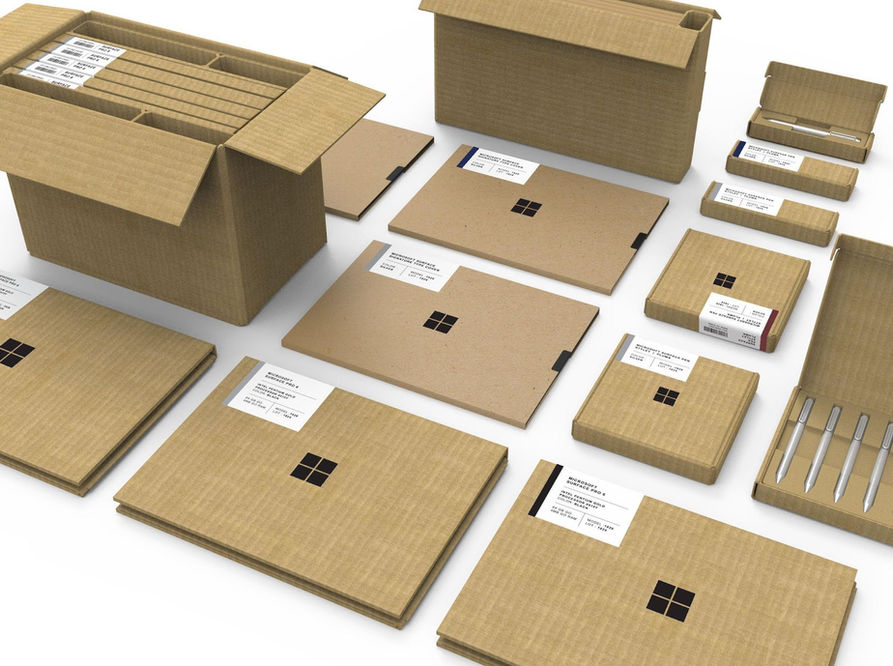Microsoft Surface
In-house evaluation of the Surface brand revealed that more than half of all Surface device sales came through the B2B channel (i.e. businesses, educational institutions, or government agencies). At the time all products were packaged in the same consumer retail rigid box and pulp tray construction. The B2B channel required a much different out-of-box-experience than individual consumers; valuing material reduction and operational speed and efficiency. A 2 year platform redesign extended the current portfolio with a tailored packaging experience specifically catered to the business channel’s needs while still delivering a world class Microsoft brand experience.
Role
Lead structural packaging designer & visual identity support
Year
2017 - 2019

Surface
Unboxing

Customer Feedback
Based on customer feedback, internal conversations, and visits to partner distributors the number one issue with the current packaging was waste. A typical B2B customer unboxed many products at one time. The number of packaging components per box and difficultly with breaking down the materials flat, created a situation where customers work flows were negatively impacted and slowed.
Concepting
A 2-part portfolio approach of creating single units and bulk boxes addressed the diverse set of needs and deployment scenarios seen throughout the B2B channel. Each concept reduced overall material and componentry, utilized materials commonly recyclable, created modularity, and broke down flat after use.


Single Unit
Single shippable unit to fulfill small orders
Bulk
Large scale orders for mass deployment
Prototyping
This new portfolio required a collaborative effort with the current vendor set, and also initiated new relationships. Designs were refined and optimized accounting for material sheet size, manufacturing limitations, assembly time and steps, and packout line layout and space.
Additionally, pilot samples were taken to customers to simulate real unboxing and setup work flows to evaluate and gain feedback on the new designs versus the existing.

Sustainability
This portfolio was a multi-year cross-disciplinary effort. Compared to the existing rigid board box portfolio, this new system reduced packaging weight by more than 30%, increased recycled content in the packaging materials, and improved pallet efficiency by up to 35%; collectively surpassing Microsoft’s 2020 Packaging Sustainability Initiatives over a year early.
Visual Design
An evolution to the Microsoft brand packaging identity was required for the new portfolio. The reduced visual design system stayed true to the objectives of the system redesign:
-
Purpose built: supporting functionality required for the B2B channel
-
Informational vs. engaging: everything is considered by touchpoint
-
Scalable: to be adapted across products and substrates
Surface Hub 2S
Unboxing
The Surface Hub 2S was the first new B2B product that would be packaged in this new portfolio design language. The stripped back, simplified out-of-box-experience mimicked that of the single unit shippers developed for smaller devices. The graphic aesthetic followed the newly developed label system with reduced 4-color product renders and marketing copy, focusing the user only on key pieces of information.

Moment Mapping
Every step of the out-of-box-experience was considered. Workshops with cross functional teams to map out each critical user touchpoint aligned the team on packaging expectations and set a standard framework to design around.
User Testing
Partnership with the Microsoft UX team to design, recruit and perform unboxing and set up studies took the design from concept to launch. Rounds of graphical wayfinding refinement improved the success of this complex and large product setup process.


















































